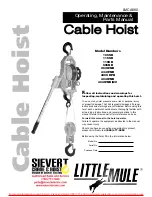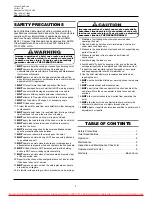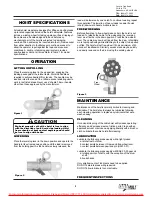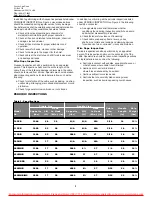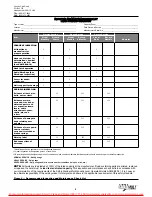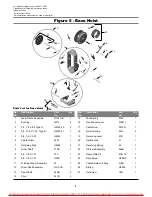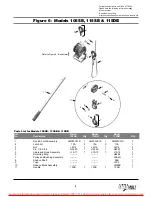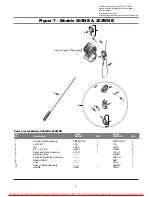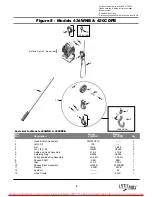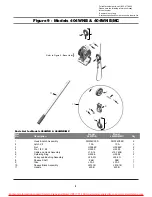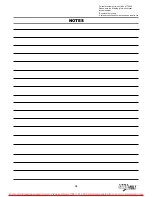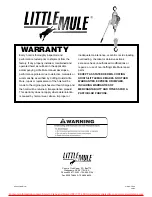
2
Country Club Road
P.O. Box 779
Wadesboro, NC 28170 USA
TEL: (800) 477-5003
FAX: (800) 374-6853
HOIST SPECIFICATIONS
All cable hoist models are designed for lifting and pulling loads
up to rated capacities listed on the hoist nameplate. Features
include a winding wheel for taking up slack or free stripping of
the cable and a handle designed to bend before any
mechanical part of the hoist is subjected to damaging
overload. The handle may be inserted into the U-Frame socket
from either direction to facilitate use in confined areas or to
allow the operator to pull against the load under unusual
conditions. A double, interlocking pawl system provides
positive load control at all times. Refer to Table 1 for model
specifications.
OPERATION
LIFTING OR PULLING
Place the reversing lever in the up position, engaging the
loading pawl against the ratchet teeth. Work the handle as
required to achieve desired lift or tension. The handle may be
inserted into either end of the U-frame socket enabling user to
work in restricted areas. Never use a “cheater” bar or handle
other than those approved by the manufacturer.
LOWERING
Place the reversing lever in the down position and operate the
handle to its extreme down position until the load is removed
from the holding pawl. As the handle is slowly released, the
load will be lowered by one notch. To continue lowering repeat
this operation. The lowering of heavy loads is easier if quick
(sharp) downward handle motion is used.
FREE-WHEELING
Before attempting to free-wheel make certain the hoist is not
loaded. To release the cable for free-wheeling, the reversing
lever must first be in the down position. Press the free-wheel
lever. The cable may now be stripped from the drum to facilitate
more rapid positioning while attaching to the object to be pulled
or lifted. The hoist will not free-wheel if it has a minimum of 40
pounds of load/tension. Similarly, excess slack may be quickly
and easily rewound on the drum using the winding wheel.
MAINTENANCE
Maintenance of the hoist is normally limited to cleaning and
lubrication. The hoist should always be lubricated following
each cleaning operation to replace any lubricants that were
washed away.
CLEANING
Occasional cleaning of the cable hoist will increase operating
efficiency and decrease wear on friction parts. Clean with an
approved solvent or kerosene, applying liberally with a brush or
cloth. Lubricate the cable hoist after cleaning.
LUBRICATION
Lubricate the following areas weekly with a light grease:
a. ratchet teeth of drum.
b. contact points between U-frame and free-wheel lever.
c. contact points between pawl and pin (H5230-31).
Lubricate the following areas weekly with SAE 20-30 gear oil:
a. rotating points of shafts, with the exception of the drum
shaft.
b. hook shanks
Only small amounts of lubricants need to be applied.
DO NOT saturate areas with grease/oil.
DO NOT allow lubricants to contact cable.
FREQUENT INSPECTIONS
Figure 1
Figure 2
Figure 3
Free-
Wheel
Rig hoist properly so that the hoist is free to align
with the direction of pull. Avoid side loading. Hoist
frame should not bear against anything and should
be free to align with hooks.
For more information contact: Sievert Crane and Hoist, (708) 771-1600, parts@sievertelectric.com, www.sievertcrane.com

